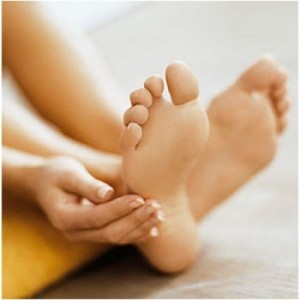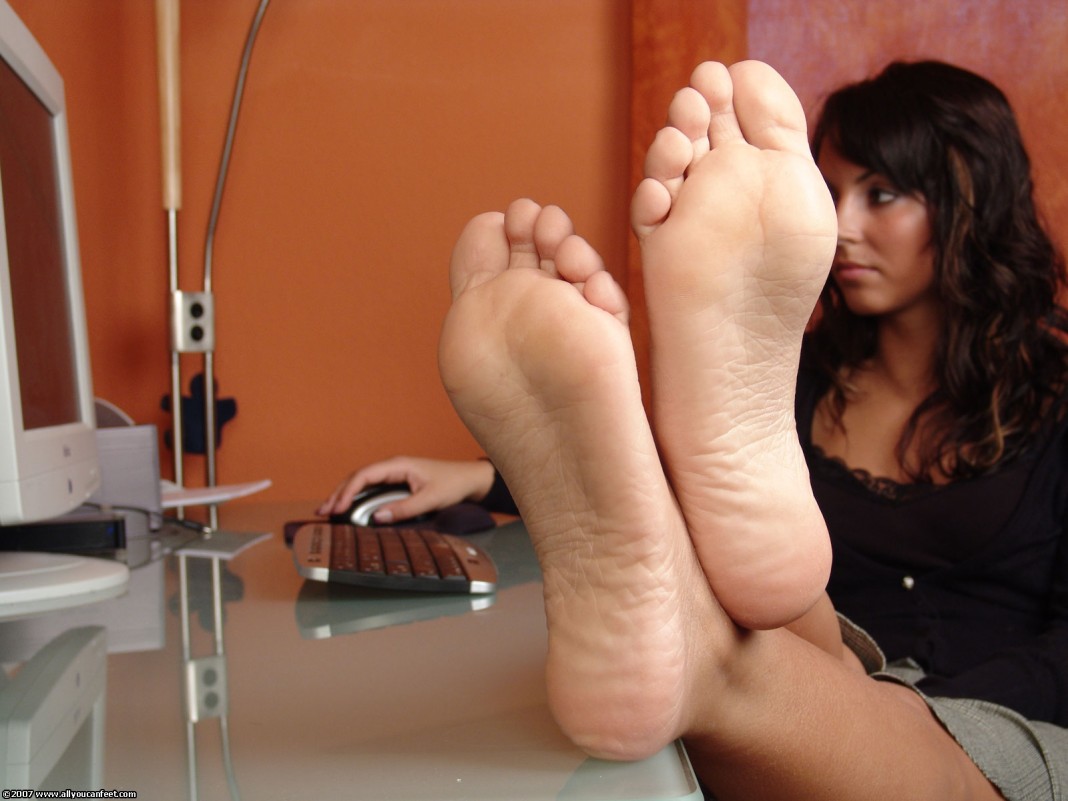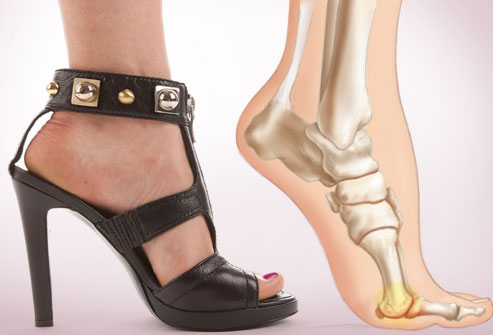By: John K. Hyland, DC, MPH, DACBR, DABCO, CSCS
Women differ from men in structure and biomechanics, and their feet are among the most different and problematic of the structures, becoming more prone to severe problems later in age.1 In spite of this, we often tend to treat female patients, who have foot imbalance and lower extremity dysfunction, in the same way as male patients. It is vitally important to remember and review the several important areas of difference, so that we can provide specific and effective care.
Women’s Feet
 Foot Shape. The female foot tends to have a narrower heel (in relation to the forefoot), and is narrower overall than a man’s foot relative to its length.2 The Achilles tendon is smaller in circumference and strength, but it is also shorter. Because of the narrow heel and foot, the forefoot is relatively quite wide. This causes the biomechanical forces on the foot to be distributed in a different manner.
Foot Shape. The female foot tends to have a narrower heel (in relation to the forefoot), and is narrower overall than a man’s foot relative to its length.2 The Achilles tendon is smaller in circumference and strength, but it is also shorter. Because of the narrow heel and foot, the forefoot is relatively quite wide. This causes the biomechanical forces on the foot to be distributed in a different manner.
Foot Problems. Women tend to develop biomechanical problems and symptomatic conditions in the forefoot more frequently than men. Bunions (hallux valgus), hammer toes, callus formation, interdigital neuromas and metatarsalgia are all more common in women.3 Many of these conditions have been linked to abnormal biomechanical forces in the feet, or “abnormal foot weightbearing patterns,” including a lower medial arch with greater pronation, reduced dorsiflexion of the first metatarsal joint and limited ankle dorsiflexion (due to calf muscle tightness).4
Solution. Women’s shoes should be narrow at the heel and widen substantially at the forefoot. It should have a short but wide toebox, and some mechanism (such as laces or straps) to keep the narrow heel in place during gait. They should be designed to support the longitudinal and anterior transverse arches,5 provide metatarsal padding and limit excessive heel motion. Researchers have found that small, dense metatarsal arch pads positioned more distally are most effective in reducing the pressures on the metatarsal heads.6 One study of patients with metatarsalgia found that custom-made orthotics with a “metatarsal dome” decreased the plantar pressures by an average of 17% and reduced reported pain by 71%.7
Women’s Shoes
Fashion Victims. The fashion industry perpetuates the image of the “sexy” woman in high-heeled shoes. Many women wear heels that plantar flex the ankle and place increased pressures on the forefoot and metatarsal heads. Even a heel as low as ¾ inch has been found to increase the pressure on the forefoot by as much as 22%.8
Sizes and Fit. Constrictive shoes accentuate the problems of high heels, and they create problems of their own. A study of 356 healthy women found that 88% were wearing shoes that were significantly smaller than their feet.9 The average difference measured between the shoe and the foot was 1.2 cm. Eighty percent of the women in the study stated that they had some foot pain (almost all in the forefoot). Those who reported no foot pain had an average foot–shoe discrepancy of only 0.56 cm. The researchers recommended that women should always buy their shoes by fit and not by size, and that shoes should always be tried on at the end of the day and be fitted to the weightbearing foot.
Solution. All female patients should have their footwear checked for fit, since many are wearing shoes with heel heights that increase forefoot pressure that don’t fit properly. One easy method to see if a shoe fits is to trace each foot during standing, and then trace the shoe. Any significant discrepancy means that the foot is cramped when standing and restricted during gait. When a higher heel is worn, more pressure is exerted on the forefoot, making proper fit more critical.
A properly designed pair of custom orthotics. One such women specific orthotic is the Foot Levelers: Sassy™ (Fig. 1), should be used to maintain all 3 of the foot’s arches and support the anterior transverse (metatarsal) arch, which is especially important for women. However, no orthotic can support the foot correctly if it is placed in an improperly fitted shoe. Shoe size, both length and width, must allow for correct biomechanics during gait. So ensure you properly fit your female patients, and that you fit them with orthotics that are going to accurately accommodate their foot structure.
Figure 1
References
- Comparison of the responsiveness of the foot health status questionnaire and the Manchester footpain and disability index in older people. Menz HB, Auhl M, Ristevski S, Frescos N, Munteanu SE. Health Qual Life Outcomes. 2014 Oct 25;12:158. doi: 10.1186/s12955-014-0158-4.
- Cross-sectional analysis of foot function, functional ability, and health-related quality of life in older people with disabling foot pain. Mickle KJ, Munro BJ, Lord SR, Menz HB, Steele JR. Arthritis Care Res (Hoboken). 2011 Nov;63(11):1592-8. doi: 10.1002/acr.20578.
- Foot pain, plantar pressures, and falls in older people: a prospective study. Mickle KJ, Munro BJ, Lord SR, Menz HB, Steele JR. J Am Geriatr Soc. 2010 Oct;58(10):1936-40. doi: 10.1111/j.1532-5415.2010.03061.x. Epub 2010 Sep 9.
- Foot health and shoewear for women. Frey C. Clin Orthop Relat Res. 2000 Mar;(372):32-44.
- The effect of subtalar joint posting on patellar glide position in subjects with excessive rearfoot pronation. Klingman RE, Liaos SM, Hardin KM. J Orthop Sports Phys Ther. 1997 Mar;25(3):185-91.
- Effects of a Multimodal Exercise Program on Physical Function, Falls, and Injuries in Older Women: A 2-Year Community-Based, Randomized Controlled Trial. Patil R, Uusi-Rasi K, Tokola K, Karinkanta S, Kannus P, Sievänen H. J Am Geriatr Soc. 2015 Jul;63(7):1306-13. doi: 10.1111/jgs.13489. Epub 2015 Jun 26.
- Evaluation of Men’s and Women’s Gymnastics Injuries: A 10-Year Observational Study. Westermann RW, Giblin M, Vaske A, Grosso K, Wolf BR. Sports Health. 2015 Mar;7(2):161-5. doi: 10.1177/1941738114559705.
- Dose-response effects of customised foot orthoses on lower limb kinematics and kinetics in pronated foot type. Telfer S, Abbott M, Steultjens MP, Woodburn J. J Biomech. 2013 May 31;46(9):1489-95. doi: 10.1016/j.jbiomech.2013.03.036. Epub 2013 Apr 28.
- Association between foot type and lower extremity injuries: systematic literature review with meta-analysis. Tong JW, Kong PW. J Orthop Sports Phys Ther. 2013 Oct;43(10):700-14. doi: 10.2519/jospt.2013.4225. Epub 2013 Aug 30. Review.
 John K. Hyland, DC, DACBO, DACBR, is an expert in the active rehabilitation of chiropractic patients. He was the developer and director of four chiropractic rehabilitation practices for more than eight years. Now, he consults, advises, and trains doctors of chiropractic in the concepts and procedures of spinal rehabilitation.
John K. Hyland, DC, DACBO, DACBR, is an expert in the active rehabilitation of chiropractic patients. He was the developer and director of four chiropractic rehabilitation practices for more than eight years. Now, he consults, advises, and trains doctors of chiropractic in the concepts and procedures of spinal rehabilitation.
Dr. William Austin, a graduate of Logan College of Chiropractic and Director of Professional Education at Foot Levelers, provides an energetic approach to learning. He draws from over 35 years of healthcare experience, which includes athletic training, emergency medicine, English Bonesetting, and Chiropractic.









